Hello Fairphone!

My phone is getting old. I’ve had it for exactly two and a half years and it is already considered old. Maybe even stone age to some people. Sometimes the alarm function won’t work (getting to school on time every day is a blessing) and the touch-function just crashes sometimes. Now, why is this? Is it made to break down after a certain amount of time? Obviously I’m not a technology-crazed person who always needs to get the latest version, since probably 4 or 5 later versions have been released since I got mine. I need a working phone, and it is extremely hard to live without one these days. But I would like it to be created by someone who considers the consequences for people and for our planet. Hasn't anyone created just what I need?
Yes, someone has! Fairphone is a company based in Amsterdam that currently develops and sells a cellphone, a fairphone. The company calls themselves a social enterprise, since their main focus is to create social impact and create fairer economies. Producing a phone is just one means to affect consumer and producer behavior in one sector. In this case they are using the phone to understand the underlying economy and the systems behind it.
The phone looks like any other smartphone, black and rectangular with a big display and a camera. However, the components in the fairphone are carefully thought out. The phone is built to last a long time, as maintenance is possible and parts can be replaced. Fairphone works with making the mining process as fair as possible, such as improving working conditions for miners in the Democratic Republic of Congo. Manufacturing the phone in China is a business where many people have terrible working conditions. Fairphone is trying to change that. And they are very honest with the fact that everything is currently not possible to create in the fair way that they would like. This is a quote from their fact sheet:
“We want to be completely transparent in all of our achievements, including the areas where we have not yet made progress. Part of our goal is to stimulate discussions about fairness and what it means. As the definition varies from person to person, a 100% fair phone is in fact unachievable. But it is certainly possible to make products fairer than they currently are”
This strikes a chord with me. Honesty and openness is something we value in close relationships, why shouldn’t we value it in the relationship between consumer and producer as well? I think and hope that this is the only way to go for companies in the future. That companies who cannot give honest answers where their components are manufactured or harvested will be overthrown by companies that can show that they’re fair. Fair is the future.
Blue Gold
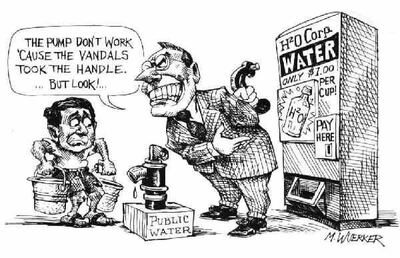
Dec. 2014
Wars have been fought over it. It is one of the most precious elements found in nature. It is so essential, that without it, you die within a few days. Large corporations such as Nestlé and successful entrepreneurs such as the Bushes or T. Boone Pickens are buying large quantities of it with only one goal in mind: tremendous profits.
I am not talking about oil, I wish I was. Water is what I am talking about. Water that you and I are so used to. Water that we use to shower ourselves. Water that we drink whenever we are thirsty. Water to wash our clothes, to cook or to do the dishes. This water, by some already called ‘the blue gold’ or the ‘gold of the 21st century’, will most certainly lead to conflicts in the future.
If you just follow the money, you will notice that the world’s billionaires and investing powerhouses are buying large plots of lands on top of aquifers, natural underground sources of potentially potable water. T. Boone Pickens recently bought up 200.000 acre on top of the Ogallala Aquifer in the United States, enabling him to drain 65 billion gallons of water per year and sell it back to the US population. The Bush family bought in 2006 300.000 acres of land in Paraguay on top of the Acuifero Guaraní, the world’s largest aquifer running beneath Brazil, Argentina, Uruguay and Paraguay and more than 25 times the size of the Netherlands. But it does not stop here. Big banks such as Goldman Sachs, JP Morgan, Citi Group, Barclays, Credit Suisse or Deutsche Bank are acquiring water sources as well. Clearly water is an important power tool of today, but even more of tomorrow.
A sustainable future for the world and its population revolves around sufficient resources for everyone. Water is one of the most vital resources for human survival and in my eyes it is therefore very short-sighted to put the control of the population’s potable water supply into the hands of a few individuals that most probably have different interests than you and I. Is there something we can do about it? Yes we can!
- Demonstrate against plans for the privatization of water. Last year, already 1,5 million people in Europe protested against the plans for the privatization of the European potable water supply by Euro Commissioner Michel Barnier. We have to show that the control of the water supply should be in the hands of the people and not in the hands of few individuals who strive profit and won’t have much social incentive to care about quality;
- Taking control back into our hands, by using crowd funding to buy up Aquifers and establish bottom-up organisations run by representatives of the population in charge of the draining and the distributing of the water;
- Becoming less dependent on the conventional water grid, by deploying new technologies. Communities, but also countries, can become less dependent on the conventional grid by focussing on new technologies that can aid in generating a potable water supply for the population. I am talking about techniques such as the start-up ‘Dutch Rainmakers’, that deploys a wind turbine to generate green energy and extracts heat out of air with water as a by-product. Another promising technique is the desalination of seawater with the use of solar energy. I once heard that almost 50% of the world’s population lives within 150 kilometers from the sea. If we could use green energy to desalinate sea water, this would be a huge revolution for all these coastal areas and even more for the coastal areas that have to cope with extreme droughts such as parts of Northern Africa and the Middle East.
I am still hopeful that with new realizations among the population and new technologies such as desalination, people can get the power back of winning water from the large corporations. And for certain things, such as flushing the toilet, we can use more and more grey water that is retained by green roofs. Still, we need to make global agreements NOW, to avoid territorial conflicts between countries (rivers and lakes are not bound to borders) and to avoid that lower income groups in developing countries will be hit hard and will have to use excessive amounts of their income for bottled water of multinational corporations. Because let me warn you: if we don't act, this will be our future.
Culture change?

Gut feeling is that culture is key to sustainability transition. It is about our health, economy, life-style, i.e. our general life quality. We need to ask questions about the way we live and challenge our habits, our culture, to help us to develop a sustainable society and the means to create it. Whatever the topic is it needs to be interrelated with many others.
Gut feeling is that culture is key to sustainability transition. It is about our health, economy, life-style, i.e. our general life quality. We need to ask questions about the way we live and challenge our habits, our culture, to help us to develop a sustainable society and the means to create it. Whatever the topic is it needs to be interrelated with many others.
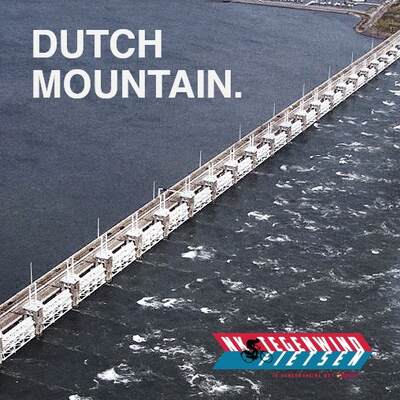
If it is about food we need to talk about employment, better environmental production and sustainable consumption habits. For example, my ‘local’ supplier guarantees that clientele is still growing. That feels good, but I’m aware that this is not the way to feed the world.
If it is about transport we need to discuss status, international power relations, production again and transport needs. During a stormy week in which I was cycling about 200 kilometres to get somewhere and back (no, no training for the Dutch championship cycling against the wind) these issues demanded my contemplation. When arrived wet and leaving for another rainy, head wind trip to my next appointment, compliments are flying about a healthy life style saving as much fossil fuels as possible. Although better be envied than pitied, at these moments it’s not that difficult to understand why I do not meet that many likeminded on my way back home. For sure, we can organise things better, but will that really result in a sustainable system? Moreover, changing cultural embedded preferences and habits takes more than a century they say.
So, we urgently need to ask questions like what if we do these kind of things differently; what behaviours promote sustainability and which ones limit progress; what cultural habits act as barriers to sustainable development; how do we change? At first sight, the challenge seems how we engage society and acknowledge that we live in an unsustainable and unhealthy culture. But at these rainy stormy days I get convinced that awareness alone will not change culture into one in which you simply put on your rainwear and start pedalling.
Should I buy an electric car?
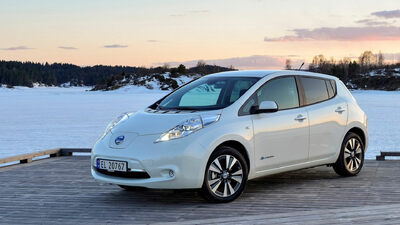
Last Thursday I was listening to the news on the radio. One of the items was about how the current fuel prices could influence electric vehicle sales negatively. Oil prices haven’t been this low (at the moment of writing $57.81 per barrel of crude oil) since 2009. This is something that fuel car owners are starting to notice at the gas station. Maarten Steinbuch, automotive professor at the TU Eindhoven, reckons in the news item that when these prices will remain low for a couple more months, less and less people will be buying electric vehicles. From a sustainable point of view this is a concerning tendency. I therefore decided to do a quick back-of-the-envelope calculation (which I quickly transferred to an Excel sheet) on the break-even time between an electric vehicle and a fuel vehicle.
One electric vehicle that immediately came to mind was the Nissan Leaf. I decided to compare the Leaf with two other Nissan vehicles that are more or less comparable in size; the Note and the Micra. I gathered data on the price, the annual tax, annual insurance and costs of use of these vehicles. I picked the cheapest available option for every car, which turned out to be the Visia editions of these cars. When I started looking for annual taxes, I stumbled upon my first problem. The tax for cars that don’t emit any CO2 are set to zero until January 2016, but are still unknown for the time after. I decided to assume that taxes will probably still be rather low compared to fuel vehicles and neglected them for now. I used the website independer.nl (which claims to be an independent insurance comparison tool) to calculate the lowest possible annual insurance. Please note that the insurance cost for the Leaf is much higher because the price of the car is higher. To determine the annual distance I asked some people around me that own a car how many kilometers they drive per year and settled down for 12,000 km per year. Although the fuel price is somewhere around €1,55 per liter right now, I used €1,70 to represent the fuel prices over the last 5 years. Since electric vehicles are only 100% sustainable in use when they are charged with electricity from renewable sources I used the price per kWh I pay to my electricity provider Greenchoice, which is (averaged between day and night rate) €0,22665 per kWh. The information on the range of the Nissan Leaf varies depending on wether conditions and driving style. I eventually picked 160km since all values are around this number. All data on the cars are either from the Nissan website or autoweek.nl.
Using these numbers I calculated the annual total cost of using the car. I added this to the price of the car to create the cumulative total cost for year 1, and continued adding the annual costs for year 2, 3, 4, etc. I was shocked to find out that a Nissan Leaf, according to these calculations, will only be cheaper than a Nissan Note after 18 years. I continued these calculations up to 25 years, but the cumulative total of the Leaf comes nowhere near the Micra. Of course, almost nobody uses the same car for 18 years nowadays, so there are some side notes to this timeframe, even as the missing additional costs like maintenance or changing characteristics of the car. I edited my calculations and raised the annual distance to 20,000km. In this scenario the Leaf becomes cheaper than the Note after 12 years. The Micra will remain cheaper for 18 years.
This back-of-the-envelop calculation didn’t turn out as a fair calculation. It is filled with assumptions that may differ over such a long timeframe like residual value, tax, electricity price, gas price, maintenance, etc. You could easily argue that someone that is in the market for a car of this size might not be willing to pay the €31,010 a Nissan Leaf costs, but on the other hand, someone with such a budget might also be looking for something more luxurious or larger. It is however the kind of calculation that a consumer that is in doubt of buying a electric vehicle might do. Nissan therefore makes a comparison between a (rather small) Leaf and a (quite large) Qashqai.
My main point in this discussion is that the initial investment to buy an electric vehicle is simply still too large for the majority of the consumers. In my first column I referred to the circular economy and pointed out that modes of ownership might change in the near future. Especially in the case of these electric vehicles, leasing would be a better option for most consumers because they don’t have to make the initial investment and they will start benefitting from the lower user costs of the electric vehicle right away. Another option, which is considered in our report on sustainable mobility on Texel, is car sharing. People use cars from rental companies and pay per kilometer. This idea, with electric vehicles, has already been launched on Terschelling and is called Schylge e-auto. Nissan is now selling the Leaf at a reduced price by offering consumers the possibility to lease the car batteries. I couldn’t introduce this in my calculations because the price is based on a 3 year contract and I’m not sure how Nissan will change the lease price after three years. For the initial three years it was not cheaper however.
I draw a few careful conclusions from the mini research I did. It is not that easy to compare electric vehicles to fuel vehicles. A lot of future data is unknown, or difficult to predict. It depends on many factors like technological development and political climate but also on (network) externalities like infrastructural changes, for instance the availability of charging poles. I also think that electrical vehicles are not competing against other cars in their size, but to larger (more expensive) cars. If manufacturers really want to compete in that size class, they probably need to lower the prices. Finally, I really think that these cars are the future. But they also require the economy of the future.
Fear of climate change?

Based on three different TED talks, this column is about why I believe we did not feel the urge in the past to become more sustainable as a society. And why now is the time again to create a transition towards a more sustainable society.
Based on three different TED talks, this column is about why I believe we did not feel the urge in the past to become more sustainable as a society. And why now is the time again to create a transition towards a more sustainable society.
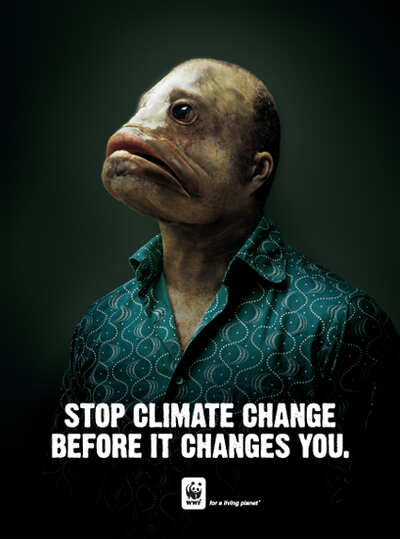
This week I saw a TED movie from Paul Gilding: the Earth is full (http://www.ted.com/talks/paul_gilding_the_earth_is_full). In his daunting story he tells the audience that although we had 50 years of warning of a deteriorating climate, people still have not changed their direction. In this talk he suggests that when thinking of climate change, people should feel a bit of fear. ‘We’ve evolved to respond to danger with fear to motivate a powerful response, to help us bravely face a threat.’ When I was recently talking to a friend of mine about climate change my friend responded with: ‘But they were also wrong about the end of the world in 2012, so maybe climate change is a hoax as well’. Although the majority does not think like this, we have to be aware that there are still people that do. And although people now see the urge of sustainability, change is not implemented as fast as needed. Why do we not have the urge to change as a society? Is it because we do not fear climate change enough?
I searched for TED talks on the topic fear and came across Karen Thompson Walker: What fear can teach us (http://www.ted.com/talks/karen_thompson_walker_what_fear_can_teach_us). As we grow up, society encourages us to think of fear as a weakness. Neuroscientists have shown that human beings are hard-wired as optimists. This makes us think ‘We should not worry, we will be all right’. But fear is not a bad thing, fear is a form of storytelling. Fear helps us to predict possible futures. Fear allows us to look further in the future that has not happened yet. Yet fear can be deceiving and make us listen to the most vivid stories that talk to our artistic mind and not our scientific mindset. Karen Thompson Walker states this could be a reason why people see the subtler and slower disaster we face, like gradual changes in our climate, as less frightful than serial killers and plane crashes. We have a more vivid imagination of serial killers and plane crashes than that the global temperature is rising with 2 degrees. Are we more afraid to decrease are consumption behavior and compromise on our excessive lifestyle? Are we more afraid to let go of unsustainable practices since they provide economic growth? Are we afraid to let go of unsustainable practices, since these conditions provide certainty because we are used to them? If this is true, than what about the assumption that in the further future global economy will stagnate because we depleted our resources? If this image is not vivid enough, than what about the documentary’s on climate change, like An Unconvenient truth of Al Gore? They made the fear pretty vivid to me.
Maybe the problem was that not everything of An Unconvenient Truth was based on correct scientific data. In the past there have been a lot of greenwashing, which has gotten negative publicity in the media. Sustainability has often been called too expensive. Michael Shermer (http://www.ted.com/talks/michael_shermer_the_pattern_behind_self_deception) states our brain is wired with a believe engine. We are pattern seeking primates that want to connect the dots and have association learning, where A appears to be connected to B. Maybe all the greenwashing and negative publicity on sustainability has made consumers see sustainability as an expensive overreacted thing.
But nowadays signs can no longer be ignored. Climate change signals, depletion of resources and natural disasters make consumers see a pattern again that we are depleting the world. I believe that is why sustainability is becoming more mainstream and there is a chance again to create a movement towards a more sustainable society. We have to be transparent about possible futures based on scientific data and confront consumers with possible futures that do not look to bright. But at the same time we need to show a pattern in that sustainability can be self-financing with the right business models and does not have to be expensive. We need to proof to consumers that action A will lead to a more sustainable society and inspire them to find solutions as well for the challenges we face. As Karen Thompson Walker states ‘fear is an amazing gift which allows you to see what the future could look like, while you have still time to change it.’
How to script sustainability
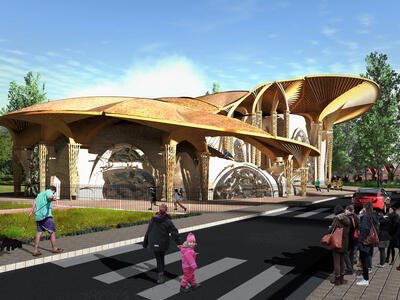
Mankind produces a lot of waste. A lot of is comes from the built environment. Recycling used materials requires responsibility of the people, because a lot of the materials are not biodegradable. They have to be kept carefully in the technocycle to be able to be reused and to prevent harm to the environment.
Buildings contain all different kinds of materials of which some can be very hazardous. They are kept together in the structure, but they are deteriorating over time and it is questionable whether it will be demolished in a proper way later on. So why don’t we make buildings that are entirely biodegradable? You would probably think that a building would then deteriorate very quickly. However, the lifespan can be as long as that of a normal building with intelligent design and periodical maintenance.
It is also important to bring down impact on the environment while using the building. It is preferable to use as less energy as possible and also renewable if possible. A building has to be designed very cleverly with all these aspects in mind.
Sol van Kempen, a student at the architecture faculty, is graduating on the design of a building that is totally biodegradable. In addition to that, it is also designed in a way that optimises indoor climate without the use of energy consuming climate installations. It is a building for a primary school, based on four core principles. Firstly it is using no unsustainable materials. Secondly it is using local materials as to bring down transport costs and pollution. The third principle is the least use of energy as possible and the fourth aspect is the use of natural ventilation to minimize energy use by devices.
With these core principles in mind, Van Kempen created a computer script that i.e. optimized the zoning of the spaces according to the required indoor climate. The script is self-evolutionary. This means that it creates a set of possible outcomes and then selects the best-performing design. The selected design is then further developed in the next stage of the script.
A lot of quantifiable factors can be taken up in the script. Such as façade surface, energy use and the amount of material used for the building. All these factors can be optimized with a change of the shape of the building as a result. For example the rammed earth structure has been optimized in a way that it optimally buffers heat, but also saves material while remaining strong. This led to an intricate vault structure that carries the wooden roof. The roof has been designed in a way that it optimizes the solar irradiation on the facade throughout the year.
This way of designing can be very effective in optimizing the sustainability of a building. The computer is doing a lot of real time calculation that a human brain can’t do. The architect remains in control by deciding what aspects are important, but instead of designing a building, he/she is rather designing a script. Computational design with complex parameters can in this way result in a more sustainable building.
Green Gold
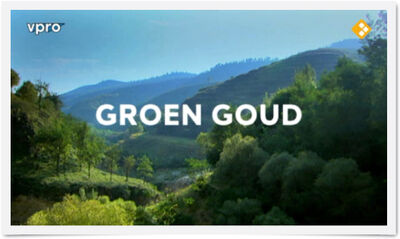
Restoring ecosystems not only provide environmental benefits, but also economic. Two years ago showed the makers of Tegenlicht in the broadcast ' Green Gold ' that greening deserts is quite possible . They followed the US-China cameraman and ecologist John D. Liu. He fell under the spell of the restoration of landscapes when asked to film the greening of the Loess Plateau in China. The images of the landscape before and after are amazing.
Our current model of overcroping needs to be replaced, we need another model. The model presented by John D. Liu can restore the hydrological function and restore furtility of degraded land. Tt has proven itself that it works.
That this can work, we see in Egypt. In 1977, Dr. Ibrahim Abouleish started SEKEM, an experiment to greening the desert near Cairo. In 2014 SEKEM has become the main supplier of organic products in Egypt and beyond. Dr. Abouleish has built not only a thriving business in the desert but a complete community with schools and private medical and cultural facilities. A better proof that greening and social innovation go hand in hand is almost impossible to find .
An other examples in the documentary is the Indian Jadav Molai Payeng. When he was 17 , he worked for a replanting project in the province of Assam. After the project was completed and the other workers were gone, he decided to personally to continue planting trees. Meanwhile, 'his' Molai forest spans 300 hectares and is populated by elephants, Bengal tigers, deer, rhinos and countless birds. In India Payeng is called 'The Forest Man' because he has managed to create a jungle.
Groen Goud 2, VPRO Tegenlicht, http://tegenlicht.vpro.nl/afleveringen/2014-2015/groen-goud-2.html
Rogue idealistic parties
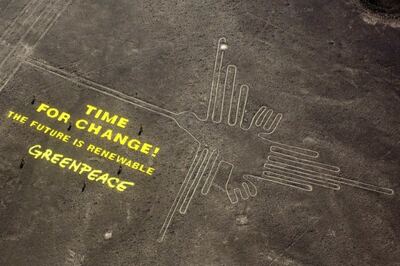
Quite recently Greenpeace came in the news rather negatively. Apparently they vandalized the Nazca lines, Peru, while trying to broadcast a message regarding global warming. This really rubbed me up the wrong way. While I support the initial message, this way they only made it worse. What the hell were they thinking?!?
Not only is this act an act of vandalism, it damaged a protected area in which ancient geoglyphs were lying. It is/was an ancient world cultural heritage. And if this weren't bad enough, there didn't was anything like an apology. They only stated that they were sorry that some people didn't like it. This shows for me Greenpeace, or at least the responsible department/people, really lost reality out of sight.
If one want to deliver a serious message to the world, regarding the destruction of the world, don't do it by destroying a part of the world. This way they only get heavily criticized. And while this may be what they were looking for (controversy), people now have a more negative with the message they were trying to deliver thus having an inverted affect. And while we're trying to get educated and later trying to help with solving the problem, there people are just undoing this kind of work. I almost can't understand how such people can be so ignorant. It also makes me feel a little hopeless. While we're trying to fix a problem, others (like these 'rogue idealistic groups') are doing these kind of actions to turn public opinion the wrong way.
While this action, for example, was very, very stupid, I can only hope most people will see beyond the vandalism and don't think less about the stated message. For change can only be made possible with public support and a global change in habits. While this action will probably not affect the public opinion much, it just feels like a step backwards. And that's something we just might not be able to afford.
Dictionary, Crumbled Piece of Paper and Responsibility.

While I was searching for some information about the sustainability issues this week I came across one website which I would like to share with you. I am doing it not because I want to promote it or to describe how good it is. The reason why I want to dedicate part of my column of this week to this specific website is because I like the idea and the initiative of people who created it. Moreover, it helped me to recall one interesting story and think about our responsibility towards the world we live in.
While I was searching for some information about the sustainability issues this week I came across one website which I would like to share with you. I am doing it not because I want to promote it or to describe how good it is. The reason why I want to dedicate part of my column of this week to this specific website is because I like the idea and the initiative of people who created it. Moreover, it helped me to recall one interesting story and think about our responsibility towards the world we live in.
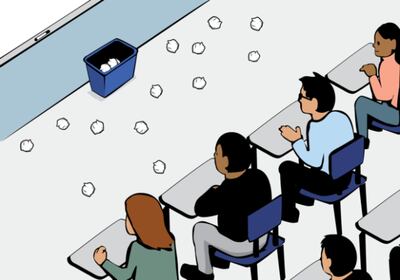
The website I am talking about is called “The Dictionary of Sustainable Management”. This is an open online dictionary for business leaders and students related to sustainability, business and management studies. This dictionary is an initiative of the students from Presidio Graduate School and the main purpose and their goal is:”… to inspire people to better understand how sustainability concepts are creating new understandings (or reinvigorating old ones) in the spheres of business, government, and society. ” The dictionary is designed as an open source where everyone can leave comments or submit their own definitions and ideas, which, if approved by the editors, can become part of the dictionary.
I find such an approach towards suitability issues very interesting and important. I think that open online dictionary is a nice way to involve students to share knowledge they gain with the specialists that are already working in the field and might have less knowledge about sustainability. This idea reminds me of a story about the privilege. The responsibilities we all have by gaining specific knowledge do not have to be wasted, but used. While learning about sustainability, different approaches towards it, theories and ways to be sustainable we should understand the importance and responsibility to make them come true. Maybe it will happen not today or tomorrow, but we must keep trying to apply our knowledge into practice.
A letter to Santa Claus (column 5)
Dear Santa, it’s time to be more sustainable and create a more sustainable toy industry

Dear Santa Claus,
Christmas is coming soon and I am looking forward to your visit. This year, I have only one thing on my list and this is related to you! A new, sustainable workshop for you.
Have you ever consider, how much sustainable are you? Although you have done a truly wondrous thing by delivering toys to children all over the world, year after year, I have some doubt related to the sustainability perspective of your global toy enterprise. So, my year’s wish is to consider a complete overhaul of your business model making yourself not only the figure that makes people happy by bringing them gifts but also a “hero” that is trying to save the world.
The changes have to do from production and distribution of the toys but also the quality, the type and the quantity of them.
Firstly, I wanted to raise the quantity problem. Recognizing how full our planet is, I can suggest you instead of producing so many new toys every year to facilitate ways to share toys amongst children. The average toy is only played with for probably less than an hour a day, then discarded rather quickly. So perhaps it would be better to have toy libraries where families could borrow toys instead of buy them.
Secondly, if you're feeling entrepreneurial, perhaps you could help cultivate a secondhand market for used toys. Even better, you can start an enterprise of rental game. Everyone will trust Santa and so your enterprise will be succeful. For example parents can rent toys and games per months and send them back when their children get boring of them. Toys aren't easy to mail because of their weight, however your reindeer could provide an advantage, if they're available, and I think they are, for working year round.
Another issue is the durability- quality- materiality of our toys. If toys and games are more durable and can last for generations would also help reduce global waste streams and resource use by applying the cradle-to-cradle concept. Also it time to think more about the materiality of the toys for instance, plastic toys can be fully recycled into new plastic toys.
Finally, I'd also like to ask you to think about the types of toys you produce. Too many of the toys promoted today reduce creative and educational play. Most of them are related to weapons, vehicles and princesses and very rare to environmental issues. Where's Captain Planet when you need him?
So please Santa, convert your workshop into a more sustainable place. I recognize this is no easy gift to grant, but for someone who can deliver over a billion toys in just one night, then you can do everything also this. And hopefully, once you and Rudolph light the way, other toy companies will follow.
Before leave to continue with your mission, please look in the kitchen; I left you on the table two sustainable chocolates. One for you and one for Rudolph. Enjoy them!
Thank you Santa, and I hope next year I will be able to call you Sustainable Santa!
Love, Elia
GMOs: Advantages vs. Disadvantages

GMOs: Advantages vs. Disadvantages
According to the World Heath Organization (WHO), Genetically Modified Organisms (GMOs) are defined as organisms, which DNA has been altered in a non-natural way. For instance, Genetically Modified plants (GMplants) are usually altered to be resistant to insects, virus and tolerant to herbicides. With these changes come some potentially problematic environmental challenges that are being the center of some ethical and environmental.
For instance, toxicity is a huge issue surrounding chemical pesticides and herbicides. Besides, the long-term effects of GMOs are not certain. And there are lots of concerns and questions about how GMOs could harm biodiversity and ecosystems. What is more, GMOs are the main topic of some social and ethical debates as well.
Furthermore, it is stated that GMOs are more questioned within the food production market; however, people are more comfortable about the fact of using GMOs in order to improve the medical features of some plants.
On the other hand, some studies show Genetically Modified Plants as the basis of food quality improvement and biopharmaceutical production. In fact, it has been proved that new species produced by the gene technology approach are beneficial for society by producing healthier food products for maintaining health or preventing diseases. Actually, some GMOs are suitable products for patients suffering from allergies. It is also mentioned, that GMOs improved food products quality by providing more balanced diets. In fact, products with a more appealing and marketable appearance that require less energy during the producing process. What is more, fruits and vegetables with improved life projection produce less waste. Moreover, it is stated that the economic benefits resulting from the application of biotech seeds and the associated production technologies usually outweigh the additional costs. However, it is important to mention that in the case of GM plants control is more flexible and cost-effective, and pest-related yield loss is usually lower compared to traditional varieties, thus the production cost per tone of harvested GMOs is lower.
Nowadays, many positive aspects have resulted from the use of GMOs within food quality improvement and biopharmaceutical production. Actually, the increase in agricultural productivity has made it possible to supply the world population with food of suitable quantity and quality. But, GM plants have been cultivated for approximately one and a half decades and on an ever-increasing area. Therefore, people basically still do not have enough experience gathered over a sufficient period to ensure reliability on the process and products. More time is required in order to answer some questions regarding GMOs such as; GM plants can create future virus variants that can be harmful to nature; or, people are also concern about the fact that biodiversity could be in danger by the cultivation of GM plants.
(ERVIN BAL.ZS, 2011) (Marris, 2001)
Bibliography
ERVIN BAL.ZS, Z. B. (2011). Plain Facts about GMOs. SZEGED: ERZS.BET FEJES.
Marris, C. (2001). Public views on GMOs: deconstructing the myths. European Molecular Biology Organization , 545-548.
Sustainable Christmas – "Green" Gifts

Christmas holidays is considered as the best period of the year for giving gifts to our close friends and family. Many times, however, we have difficulties in finding the right present, ending up buying useless things that will probably be wasted and reach the landfill. Thus, instead of wondering and wandering around the shopping centers, there are a lot of alternative solutions to make presents with a little effort and a bit more imagination; ‘greener’, cheaper and more useful.
‘Greener’ presents will eliminate the waste and the ecological footprint. Here are some suggestions: [1]
- Locally made gifts need a lot less transportation to reach the customers, reducing the greenhouse emissions and global warming
- Gifts made out of recycled materials help the reduction of landfill waste, while promoting companies ecologically friendly
- Battery-free gifts are sustainable. Batteries are one of the most hazardous products when it comes to their end-of-life. Even the rechargeable batteries, eventually, end up to landfilling. About 40% of all battery sales occur during holiday season, so take care of what kind of presents you pick.
- Make useless, for you, gifts go around is not something wrong. Something that can be completely a waste for you, can be extremely useful to someone else; why not give it a try? But always be careful to be distinctive and not make the person that gave you the present feel awkward.
Moreover, a game like ‘secret Santa’, where a lottery would show who should make a present to whom, eliminates the number of presents to one, creating an interesting game between friends and family, while promoting the Christmas spirit of thoughtfulness instead of consumerism. In addition to this, one average price is usually agreed on the presents to be bought/made, so that it will make things easier for everybody.
Last but not least, an experience can be much more appreciated and enjoyed than an object. A visit to a museum, the zoo, a Christmas market, a nice dinner, getting in touch with nature will be a great opportunity to have fun, laugh, talk, share and get close to our friends and family. Time with our close friends is all we need at the end!
Let’s focus on Christmas as a celebration of caring and expressing it by devoting….TIME!
1. “How to have a ‘green’ Christmas”: http://eartheasy.com/give_sustainchristmas.htm
Rather a SUV than a dog

Dogs. You love them or you don’t. I think I belong to the second category. A few days ago I was on traveling by train and I wanted to get off, but a really ugly dog was standing in the way barking at me. Why I don’t know. Maybe jealous that I was able to get out and he wasn’t. Luckily the owner could stop the dog otherwise he would have attacked me. That is one of the reasons I don’t like dogs. Most of them at least. The cute little ones I do like. Another reason for to switch your dog for another pet is the unsustainability of a dog.
A study by two professors from new Zealand has shown that an average dog emits more CO2 than an SUV. Source They reached that conclusion after they had calculated that a dog consumed an average 55.1 gigajoules of energy in the form of meat and dog food. With this amount of energy an SUV is able to ride about 10,000 kilometers. More importantly, the average SUV emits about 50 percent less CO2 than a dog. This is a remarkable fact, which is very sensitive in the society. For most people dogs are holy. It is remarkable that SUVs be slighted because of their damage to the environment, while pets in that respect will be ignored completely. We should put dogs on a vegetarian diet. That would save lot of CO2 emission.
How about other pets? Other pets also have been subjected to investigation by the two professors. The CO2 footprint of a cat is equivalent to a Volkswagen Golf. Two hamsters equal a flat screen television. Maybe that's the choice parents should give their children now a days, do you want a goldfish or a mobile phone?
Seawater as renewable energy source?
column week 5
Doing the research for the water-cycle on Texel I found out that al lot of efforts are needed to close the water cycle on the island. The island currently depends on 2 pipelines that are connected to the mainland for its drinking water supply and after the water is used and cleaned it is released into the ditch system that leads to the sea. This means that all water entering the island ends up in the sea.
Our research is now focussing on closing the cycle by using technical innovations to clean and reuse water combined with demand reducing interventions in different scales. New drinking water could be produced by using rainwater and the cleaned used water to close the cycle. However, I think we might also look at an unlimited water source that is literally surrounding the Island: saline seawater. Could this water be used to contribute towards a self-sustaining water system on Texel? Let’s have a short glimpse of what’s already possible.
Production of drinking water out of seawater is of course a possibility. This has been done for more than 2000 years, but is very expensive and energy consuming compared to local sources of fresh water. The technique is only used in places with no accessibility to fresh water such as the Middle East, but not in poor countries since they can’t afford it. Desalination techniques should be further developed in order to be feasible on Texel; drinking water via the pipeline originated from a natural source is still a more sustainable alternative.
But seawater can also be used without desalination. For example, farmers on Texel already started experimenting with saline agriculture. The first crops, saline sea-kale were already on the market in 2008 and developments did not stop there. Farmer Marc van Rijsselberghe now produces a variety of saline crops such as potatoes, onions, roots and cabbages. Who knows what genetic modification can do to make other plant species suitable for saline agriculture. By growing crops with saline seawater, land does not have to be irrigated with fresh water, which would be very beneficial towards a self-sustaining water system on the island.
What about other purposes of sea water, such as energy production? A very promising “Blue Energy” test facility has recently been opened in the Netherlands, close to Texel. The facility on the Afsluitdijk uses difference in electrochemical tension between fresh and salt water to produce electricity. This single plant can generate up to 50.000W, and if more plants would be added to this dike alone enough energy is generated to provide all Northern provinces of energy, including Texel.
The US-navy is also working on extraction of fuel from sea water. They already managed to this, but only in small quantities and it took a lot of energy. The techniques are however very promising if they’re further developed.
These few examples show that the water system on Texel can benefit from the sea towards a self-sustaining system. But if techniques will be improved maybe even fuel and energy can come from the sea. Seawater as a substitute for gas and oil, how amazing would that be!
- Jesper
15 Resolutions for 2015
Since the start of this course sustainability is on my mind more and more often, however I haven't changed any of my habits yet. Time for some classical new years resolutions!
Since the start of this course sustainability is on my mind more and more often, however I haven't changed any of my habits yet. Time for some classical new years resolutions!
As I proposed in my previous columns I think small changes applied on a large scale are the key. Therefore I've made the following goals for myself:
1. go by bike more often
2. shower 1 minute shorter
3. separate household trash
4. introduce an extra day without meat
5. don't leave the tap open during the dishes
6. turn off your laptop if you don't use it
7. avoid spilling food
8. don't leave the heater on
9. wear a(n extra) sweater inside
10. don't fill the entire cooker for one cup of tea
11. don't buy Primark clothes
12. fill up the refrigerator
13. unplug charged devises
14. turn off the lights
15. find out how much you can save!
As an encouragement for myself I'll try to find out the influence of these "small" changes!
Tomorrow..
Sustainable transitions
This week, the main topic was evaluation about what the different groups have come up with so far. Before that, we had a lecture on the transition to energy independency by Cor Leguijt from CE Delft. This fitted nicely in this weeks’ overarching theme; Energy Transitions. Since this connects really well to the Climate-KIC affairs, I will return to my Climate-KIC start-up concept for this weeks’ column.
This week, the main topic was evaluation about what the different groups have come up with so far. Before that, we had a lecture on the transition to energy independency by Cor Leguijt from CE Delft. This fitted nicely in this weeks’ overarching theme; Energy Transitions. Since this connects really well to the Climate-KIC affairs, I will return to my Climate-KIC start-up concept for this weeks’ column.
One of the major themes of Climate-KIC is “Making Transitions Happen” and this focuses on changing the behavior and culture of companies, communities and individuals to reduce their impact on the earths’ natural environment. Just like CE Delft, this theme focuses on the non-technical aspects of the transition towards a future sustainable world. Within the lecture of Cor Leguijt, it became clear how this message reflects on Texel. Different types of communities (e.g. rural vs villages vs cities) need different types of strategies for their transition towards, in this example, better energy performance of buildings.
So, if you are a start-up and you focus on the non-technical part of the transition, what kind of start-up do you become? Since it is the end of the year when this column is written, I will introduce a top-3 of Climate-KIC start-ups involved in this theme. Ranked on relevance for Texel, in my humble opinion.
- Canary Control – UK based Canary control is a cloud based control of the domestic heating system. It basically is a remote for the heating system that always allows the user to adjust the heating according to its wishes. The user can even fill in his or her monthly budget for heating costs and the system will ensure that this budget is not overspent! It also adopts to the routines of its users. The relevance for Texel is reduction in domestic heat use, which means that there is a lower amount of energy needed in the final transition.
- Milk the Sun – This German start-up offers a ‘photovoltaic marketplace, connecting large scale private equity investors with developers of new solar power plants. For Texel this might be a relevant start-up because once the transition really gets going, there will be a need for serious investment and private equity might be able to bring this. Read more about the interesting (financial) mechanics at Bloomberg.
- DutchEES – Dutch start-up DutchEES has designed an intelligent thermostatic valve - the thing on your radiator that you always forget to turn off when you leave the house – which can prevent energy waste by automatically turning down the radiator if no one is in the house. The relevance for Texel is that it addresses the heat demand of existing buildings, something which indeed is a problem according to Cor Leguijt. It seems especially relevant for the tourist sector, because tourists do not have to pay the energy bill of their homes and are thus less encouraged to turn off the heat when they leave. However, there are multiple solutions to such problems. The edge of DutchEES is that there are very low initial investment costs (about €120 per valve) which can be retrieved with a €75 profit in three years. Maybe we should give this Dutch start-up a small playground in Texel?
I have to admit, the final one is in fact a small technical solution, but maybe that is also needed for the sustainable transition… Finally, I should quote Geels’ theory on the multi-level perspective on transitions. I have discussed several start-ups that could influence the current system and there is a willingness in Texel to change the institutional conditions (like laws and subsidies) of the socio-technical system. However, Geels says that there can also be landscape developments that influence the (sustainable) transition. The question remains if these landscape developments will happen. This piece on the Correspondent is at least rather positive (maybe too positive) about the developments in 2015. Let’s hope for the best!
Let’s genetically modify our food!
Lizet column #5
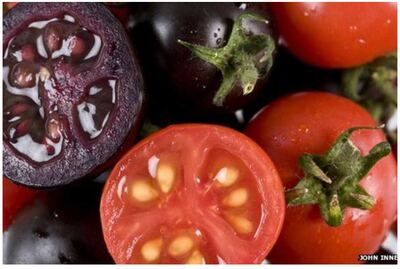
Food is for everyone in the world important: it is our primary need. The safety of the food is key, as is the quantity of the harvest in order to feed all mouths. The world population is growing and in combination with increasing failures of harvests (due to floods and droughts) a future food crisis is not an unrealistic scenario.
Grain that is resistant to drought, rice that can survive floods, improving the photosynthesis of rice to double the harvest: it would be fantastic right? Actually these products already exist, they problem is that they are genetically modified (GM) and therefore controversial in the Netherlands. GM crops are plants that have been altered to do things they normally wouldn’t do. For example the purple tomato: it is healthier, lasts longer and tastes better than normal tomatoes (BBC, 2013). GM crops can increase the efficiency of our fields and prevent failed harvests. Respected and independent research centres have proven that GM crops can contribute to a sustainable food production (Fresco, 2013).
The European Union (EU) differs from most of the world in its strong opposition to the use of genetic modification in agriculture and this position has worsened over the past 15 years (Fresco, 2013). The process of getting a genetically modified (GM) crop in production is very time-consuming and full of bureaucracy. The EU keeps on fighting against GM crops because genetic modified food would be intrinsically dangerous. The debate about GM crops looks polarized: you are either fully against, or you are all for.
The opponents of GM often talk about the big companies (see these articles about Monsanto: vroegevogels or modernfarmer) the patents, the poison and the monocultures(Vloemans, 2014). The debate is about good versus Evil, Organic versus Artificial. Organic products are considered as good and healthy, while GM products as scary.
I think that we have to ‘embrace’ the GM crops in order to create sustainable food production. I agree that the monopoly of Monsanto is scary and that patents on crops endanger the safety and availability of our food, but that doesn’t mean we have to write off GM crops. We have to consider GM crops as the answer on the food production problems, and make the correct and integer rules and regulations. Let’s genetically modify our food!
Bibliography
BBC. (2013, 6 20). UK should use GM crops says Environment Secretary. From Newsround:
Fresco, L. O. (2013). The GMO Stalemate in Europe. Science , 339 (6122), 883.
Vloemans, P. (2014, 10 10). Hoe genetische manipulatie voor duurzame landbouw kan zorgen. From De Correspondent: https://decorrespondent.nl/1889/Hoe-genetische-manipulatie-voor-duurzame-landbouw-kan-zorgen/198622824675-eeb012eb
The success of the bike

Column 5 - The success of the bike
Amsterdam is the number one bike city of the world (Gemeente Amsterdam, 2015). Around 38% of the inhabitants choose on a daily basis for the bike as a transport mean(Gemeente Amsterdam, 2015). A bike is an affordable transport mode that can move quite quickly and its range is ideal to travel from and to every place in Amsterdam. Furthermore, it is a sustainable transport mode: the lifetime of a bike is around 10 years (about equal to the economic lifetime of a petrol car), it produces no emissions during use and it requires relatively less space.
Currently, the success of the bike resulted in a problem. Cycling seems to be a convenient access and egress mode for public transport, especially for trains. So, everyone who is travelling by bike to the station has to park its bike. However, the NS and municipality of Amsterdam failed to respond to this increase of bikers, therefore there are too little bicycle parking facilities. The commuters have to park their bikes next to the dedicated parking spots, which may cause that these bikes end up in the pathway. As this may cause dangerous situations, the bikes are removed by the municipality of Amsterdam and stored in a depot. You have to pay € 15,- to get your bike back.
The shortage of bicycle parking facilities and the removal of the wrong stored bicycles is irritating the bikers. On the other hand, the municipality is annoyed by the fact that so many bikes are parked wrong. According to them, for example, it disturbs the image of the canals. Safety issues are of course also taken into account. Is this the point where Amsterdam is saturated with bikes? Is it possible to handle an increased number of bicycles in the future? Or has the success of the bike reached a maximum?
The municipality of Amsterdam wants to respond to the demand and is planning to build several bicycle parking facilities, especially near Amsterdam Central station. However, they are not able to respond that quick, neither can they fulfil the expected raising demand of bicycle parking spots. So the amount of bikes in Amsterdam is not yet saturated but will probably have a maximum. Inventive solutions could jump into these "windows of opportunities" to keep this sustainable transport mode alive. New initiatives like rental bikes that can be rented and handed-in almost everywhere in the city could be a part of the solution for this problem because of the fact that a bike can be rented by multiple users.
Bibliography
Gemeente Amsterdam. (2015, 01 02). Fiets. Retrieved 01 02, 2015 from Amsterdam: http://www.amsterdam.nl/parkeren-verkeer/fiets/amsterdam-kiest/
Gemeente Amsterdam. (2015, 01 02). Fietsparkeren. Retrieved 01 02, 2015 from Amsterdam: http://www.amsterdam.nl/parkeren-verkeer/fiets/fietsparkeren/
Open Sustainability
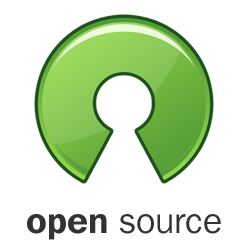
There should no longer be a reason not to build sustainably. A lack of knowledge cannot be used as an excuse anymore. The world population is growing, and will reach the amount of 9 billion by 2050. What we should do to make the world a habitable place for everyone is already clear to many of us. (Elkington 2013) However, mainly profit organizations have access to this knowledge, and make sure their greatest asset, their knowledge, is either patented or not exposed to the public. This implies great deceleration in sustainable development and it even prevents others to develop in general. By others I mean, not only other companies but also other countries. Which leads to people having to reinvent the wheel over and over again. Something, I see as a major waste of time.
What we need in this growing world of megacities with complex interconnections is an open source society in which everyone can have access to sustainable design methods if they wish. These complex cities require smart systems and for this we need scientific research. Open source allows others to use information, test and validate and improve. Values that represent the scientific system as it is. Open source allows people to become inspired by other peoples ideas and it allows people to learn from what has already been done.
In the building industry, people are often not capable of assessing e.g. the ecological footprint, the optimal construction and material depletion. At this moment, people are increasingly aware of this incapacity to share knowledge without benefiting from it. It has to do with politics, economics and cultural values. In the media, increasingly more attention is paid to the new sharing culture, and people are looking for a way to make it work. What has been most prominent in these discussions is the societal system. If we want this to work, the system needs to change. Sometimes I question myself if society is capable of doing so and if people are willing to do so. But plenty of industrties have already switched their mindset in order to contribute to the sharing economy. So everyone can maximize sustainable growth, because at this moment in time, that is the greatest challenge.
Inspiring open source websites:
openmaterials.org/
sustainability-open.com/
Elkington, J. (2013, 25 maart 2013). "Creating new forms of value: does your business have what it takes? ." Retrieved 11 January 2015, 2015, from http://www.theguardian.com/sustainable-business/sustainability-with-john-elkington/creating-new-forms-value-business.
Texelaars and Change
People define what cities and countries can be. Every country wants to improve and to be the best at something. The transition stage of a nation towards these goals is a delicate phase which can result in either make or break. Identifying what is important to the people is crucial. The culture of the people governs this aspect to a large extent, the rest of it is governed by what incentives can be given to the people of the nation. These incentives can be monetary based or better standards of living.
We came to Texel with the proposal of out of the box ideas like creating a controllable dyke (which can let in sea – water to create a floodplain so that saline agriculture can be practised) and usage of unmanned vehicles for transport in Texel. These ideas caused up a stir. They were taken with resistance from the Texelaars and shot down almost immediately. The older Texelaars believe that land primarily belongs to the people and it must not be touched for the sake of research. However, the younger Texelaars believe that the land can create much needed jobs which can reduce the on-going exodus. Still, since the lands belong to the older Texelaars they have a greater say in what happens with their island.
Furthermore, after interviewing a couple more groups of Texelaars we can came to unique conclusions that the average Texelaar is individualistic, innovative and stubborn. These characteristics primarily stem from the fact that they have survived the hardships of living on an island away from the mainland and seen the aftermath of the World War 2 affect them.
So coming up with ideas that will drastically change the landscape or the life style of the Texelaar will not be an effective strategy. Rather, to build a successful plan we need to appeal to their mind-set. Since this transition phase must be approached delicately we need to first acknowledge their ideas and then highlight that there are areas that need improvement. Next, we should unite the Texelaars towards one particular cause. It could be to put Texel on the global map. This will see that the individualism will turn to collectivism and more sustainable practices can be accepted with ease. A collectivistic approach is known to bring about positive results for the general community. Finally, maintaining an atmosphere of positivity during this transition is critical so that people know that opportunities are present and the community can benefit from these.
On course of developing a sustainable model for Texel we have reached probable conclusions that were not present in our initial plans. There is an enormous difference in the theoretical design and the practical solution. This projects a need for a site visit for every project.
In conclusion, the raw facts are that Texelaars are a hardy and protective bunch of people who cannot be swayed by elaborate bombastic plans but by explaining the need of a new system without criticising the old system too much. And also by uniting them towards a particular goal that resonates with every Texelaar.
NoMix toilet gives a chance to human waste
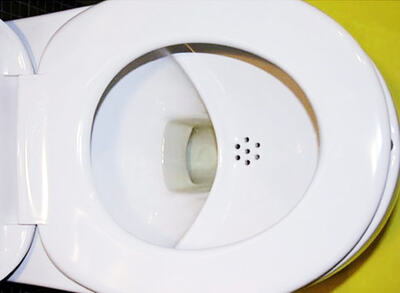
In the midterm presentation for our sub-systems, some weeks ago, it was clear that the Texel way of dealing with water can actually be improved. What emerged is that a good way is to shift the trend from “using clean water coming from the mainland and wasting the output grey water” to “using the clean water and reusing most of the output water”. As a matter of fact, this is a problem that is facing every country in the world concerned with of sustainability related to wastewater. A huge amount of wastewater comes every year from buildings, but since the different waste streams are mixed, it is hard to reuse it.
A sustainable idea is the NoMix toilets; it happened to me to read about it some time ago. This is no new concept, since it has been around since 10 years. However it is not very known still. I think that the move towards sustainability on the island of Texel should also take into consideration such a green idea. The NoMix toilet is a special toilet, in which the built-in urinal is located on a raised area in the front of the bowl, while the feces are collected in the back half of the bowl, to be flushed as normal.
The reason to separate the different human waste types is because urine is rich in nitrogen while feces are carbonaceous. When separated, these can be resources, but combined they become sludge that needs processing.
In Sweden, there are already communities that use this technology and the result is that splitting urine and feces offers advantages: the urine can be either reused as fertilizer or disposed in a safe way; both the solutions are way more sustainable than the current way of dealing with waste toilet water. If we consider the amount of water that can be saved by not flushing urine away, it is already a great achievement.
As the inventors stated, the main problem in expanding the market for this new product, is the psychological aspect, because, for example, men should change the way they use it for peeing.
This solution becomes more valuable especially on an island like Texel, where its strong agriculture sector would benefit from this free-fertilizer.
Sustainability as domain in integrated desing
Sustainability as domain in integrated desing
In the Bachelor students learn about integrated design, shifting between different scales like urban and detail and shifting between different domains like construction, detailing and climate control. During design process an architect has to focus on all these domains and scales at the same time or shift between them very rapidly. In my opinion this is the only way to make a proper design and the faculty succeeds in tutoring this way of designing.
In the Bachelor I experienced that the university takes sustainability seriously, almost every design project requires a sustainable component in the final result. I noticed that in most cases this sustainability plays only a part in the end, the whole design is near to finished and the presentation is due in a week. Only then the students start thinking about sustainability, resulting in putting solar panels on the roof, an underground heath storage and a green roof.
This is not the way it should be. First, it is very simplistic to say that those techniques make a normal building a sustainable building. Sustainability also comes from using materials that last long, or materials that are processed in the nearby area. Maybe waste materials from nearby industries can be of value for the building. Sustainability could also mean that the building can be used for a very long time. This results in a building that is able to change function easily.
Besides the fact that sustainability is not simply about putting PV-panels on the roof, sustainability should be part of the integral design. Therefore sustainability should be one of the domains like construction, climate control and building technology, so that the designer constantly focusses on sustainability as well as construction. This way from beginning to the end, sustainability is been taken care of and part of the whole design.
What can sustainability learn from chemical engineering?
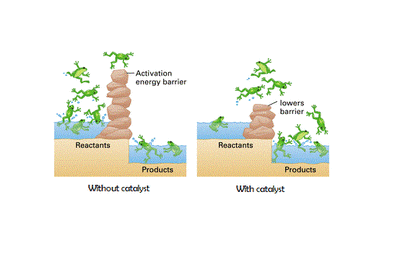
As a chemical engineer, during my thermodynamics class, I studied the concept of activation energy, which is the minimum energy required by a chemical system of potential reactants to start a chemical reaction. Furthermore, for us to fully understand the concept, our teachers made us imagine an invisible barrier separating reactants from their truly stable state as products. Then, they compared them with the barriers athletes need to jump as part of a race: the lower the barrier the less effort necessary to jump over it and the faster the athlete can run towards the next barrier. When I asked about how to do it, how to decrease the activation energy of a system, they replied that even though the activation energy was intrinsic to the system, external conditions could decrease it either by affecting the amount of energy required or by increasing the initial internal energy of reactants. This is how the concept of catalysts and the ideas of the possibilities to “play” with the external environment of a system were introduced to me.
Now, maybe you can wonder how is this related to sustainability, and is simple: what if he applied the same concept of activation energy to a socio-technical system to see what possibilities can be released. Firstly, it would be necessary to redefine activation energy as the amount of effort required for a technical system to go from an initial state towards a sustainable (and more stable) one. Sighted from such perspective, it seems like something difficult to compute and useless for practical matters. Consequently, now it is time to remember that activation energy is related to a combination of potential reactants, so, it would be easier to relate the concept not to the entire system but to a piece of it. Let use an example: let us use the activation energy to help somebody to start a healthy lifestyle.
Laura wants to start living a healthier life, for such reason she wants to start running every morning and eating more fruits every day. Moreover, she wants to save water and to manage her waste better. However, she is somewhat lazy and really hates to wake up early to exercise. So, how can the activation energy concept be applied here? The answer is quite simple:
- To exercise every morning: The activation energy would be the effort required for her to wake up, change her clothes, brush her hair, brush her teeth, look for her keys and water, and put on her sport shoes. Solutions: Go to bed with your sports clothes on, leave the shoes, keys, brush, water and a fruit in the table next to the bed for easy access, and set an alarm with energetic music that encourage movement. Expected results: As less effort is required for Laura to go running in the morning, it is more likely that she will do it regularly and to become part of her everyday routine.
- To eat more fruits: The activation energy would be the effort required for her to buy the fruits every day, peel the fruits or wash them, to cut them and to access them. Solutions: Go to the market every week and prepare a Tupperware with chopped fruits to have in the refrigerator while cooking dinner for the next day. Expected results: As less effort is required for Laura to access fruits in the way she enjoys eating them, it is more likely she will do it in a regular basis.
Now, just to check if you understood the concept, try to calculate the activation energy and possible solutions for Laura to improve her water and waste management, I am sure you can do it!
Furthermore, I believe is possible to perform a similar analysis when trying to implement sustainable ideas, identifying the efforts needed to start an action and find ways to decrease them,this methodology has taught me to think outside the box and, most of the time, I have realized that a simple change in our routine can make a life-longing difference. The implementation of the activation energy and the seek for catalysts for sustainable transitions is the main learning point chemical engineering can pass to sustainability, but I am sure that, when looking closely, the same can be done from a diverse set of disciplines in order to improve the success chances of sustainable initiatives.
Recycling the plastic soup
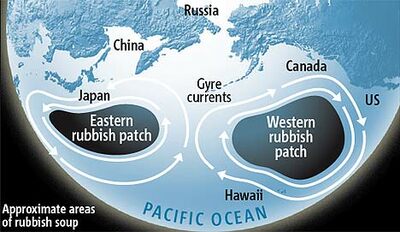
I've heard about plastic soups floating in the ocean for many times now. Since last month, my roommates and I have started separating waste as much as we can to contribute to a more sustainable world. Earlier, we would occasionally find a small glass jar in the garbage bag, accompanied by paper, plastic and sometimes even a battery. Now, we separate plastics, paper, glass, batteries and more. To see what kind of impact this has, and how recycling exactly goes in our current society, I wanted to research the subject.
The role of recycling is far more important than most people realize. It plays a large role in preserving our environment and therefore is connected to sustainability. Recycling can even be seen as the most important part of a sustainable lifestyle. Instead of throwing away valuable materials , recycling can recover these materials to reuse them. This means using materials that have already been extracted from the earth, instead of extracting more of these materials. Simply put, this greatly reduces the need of extracting more of these materials to meet consumption demands. To be sustainable and avoid depletion of these materials, the rate of extraction must be equal to, or lower than the natural replenish rate.
There is a drawback however. Products made from recycled materials are often of lesser quality than the object for which the material was previously used. This is called down cycling. A good example can be seen when we look at how we recycle a plastic bottle. The plastic bottles are grounded into tiny pieces, which are then separated by floatation. PE is then separated from PET which can both be used to eventually make new bottles. Only a small percentage of the material is lost/unusable in our current standards of bottle making combined with technically advanced systems. When looking at down cycling, we can see that one recycled bottle does not match one new bottle. Coloured PET however, is not being recycled to plastic bottles, since it does not reach our current standards for the creation of new PET bottles. Coloured PET can be used for things where our requirements are a bit lower. Buckets, flower trays etc.
If we take a look at the environment, recycling has an influence on it by:
- Reducing Landfill
- Reducing Energy Consumption.
- Decreasing pollution
- Reducing cost (you can make money by recycling)
I am glad to work on making the environment just a little bit better by recycling as much as we can. Especially seeing that this only takes a small amount of effort.
Climate Conscious Design
Stop copying your neighbor without thinking!
“If I had asked people what they wanted, they would have said faster horses.”
― Henry Ford
People most often do not know what they want. However, they know what the driving factor that is needed is, Henry Ford knew speed is the requirement and he found the Ford Motor company. This is also comparable to sustainability, most often the common people do not know what can be the new generation change.
But in today’s complex world we have to learn to adapt to the change in hand with the existing and find the best solution. The most common example is the insulation, the new trending application in refurbishment projects. However, what we most often forget to see is the capacity of the building and how long is it used. in a recent annual international Facade Conference in Lucerne, Marco Perino correctly identified the ‘Law of diminishing returns’ where in insulation materials need to be replaced every 20 years. His suggestion was to identify the layers and consider their life span. but I believe that he is missing the most important implication: that there is a missing link in a through calculation between the Life Cycle Analysis (LCA)- that compares embodied energy with the energy saved and ‘ the relatively less sustainable option considered’ – the floor heating. for example, if a house is used generally during 8 hours a night in wintertime and needs heating only during that time, using floor heating system with geo-thermal might prove to be a more sustainable option then insulation, as the life span of the former is atleast twice.
Another important point to be noted- by architects- is to not fight against climate but integrate with the climate. In essence, one should not fight by exploit the climate. The “one size fits all” agenda is something that should be reconsidered. The architects should reconsider climate over artsy trends in architecture- glass architecture being the major one. We must understand the underlying design concept and provide daylight when it is possible instead of having the shade on to avoid thermal gains. In many middle-eastern locations, it proves to be unresponsive to the climate, as it accelerates heat gain by incident solar angle. Energy can be reduced to a great extent if we as architects design buildings sensitive to climate, even analysing the local and ancient architecture. The ancient Mexican community for example, designed their roads and houses in such a way that they shade each other. In the new generation of imitating what looks good on neighbour, doesn’t necessitate your own well-being. Infact, buildings can even be instrumental in clean energy production by Building Integrated PV (BIPV).
Building envelopes are instrumental to upto 70% of increase in energy consumption due to heat gain and lighting. Of course clients can have strange demands that we as climate conscious designers know are not the best option. But its upto us as architects to tell the clients what’s best, and upto us to set the new trend in a sustainable building envelopes.
Calculate your way through sustainability
As a physicist, I want to calculate things. I want to calculate how fast a rocket is travelling, I want to calculate where a quantum mechanical particle will end up and I want to calculate what the environmental impact is of street lighting. But then there is this term sustainability. I very much like the definition of Brundtland: "Sustainable development is development that meets the needs of the present without compromising the ability of future generations to meet their own needs".
This is a definition of sustainability in such a way that you could calculate whether you live sustainable! A measure for this could be the ecological footprint. This footprint shows if everyone would live the same way you do, how many earths would be needed to sustain humanity. If everyone would live like someone in Bangladesh, we could easily do with just the one earth. But if we all lived like an American, we would need a bit over 4 Earths. I did a short calculation; for me it would be about 2 Earths. However, for this calculation you need to know exactly in which ways you use Earths' natural resources. This is a very difficult thing to keep track of, so there are a lot of calculations to be done. And as a physicist, this makes me happy.


 Klara Bergman
Klara Bergman

 Derek van den Berg
Derek van den Berg

 Bertien Broekhans
Bertien Broekhans
 Stefan Olsthoorn
Stefan Olsthoorn

 Cheyenne Schuit
Cheyenne Schuit
 Borris
Borris

 Stefan H
Stefan H

 Dennis
Dennis

 Irina
Irina
 Elia Galiouna
Elia Galiouna

 Tatiana Armijos Moya
Tatiana Armijos Moya

 Thalia
Thalia

 Iris
Iris

 Jesper Goorden
Jesper Goorden
 Rosanne
Rosanne
 Thijs Schaap
Thijs Schaap
 Lizet
Lizet



 Syed Aaquib Hazari
Syed Aaquib Hazari
 Antonio D'Aquilio
Antonio D'Aquilio

 Yannick
Yannick
 María José Galeano Galván
María José Galeano Galván

 Pieter van Hall
Pieter van Hall

 Pinal Desai
Pinal Desai
 Nora
Nora